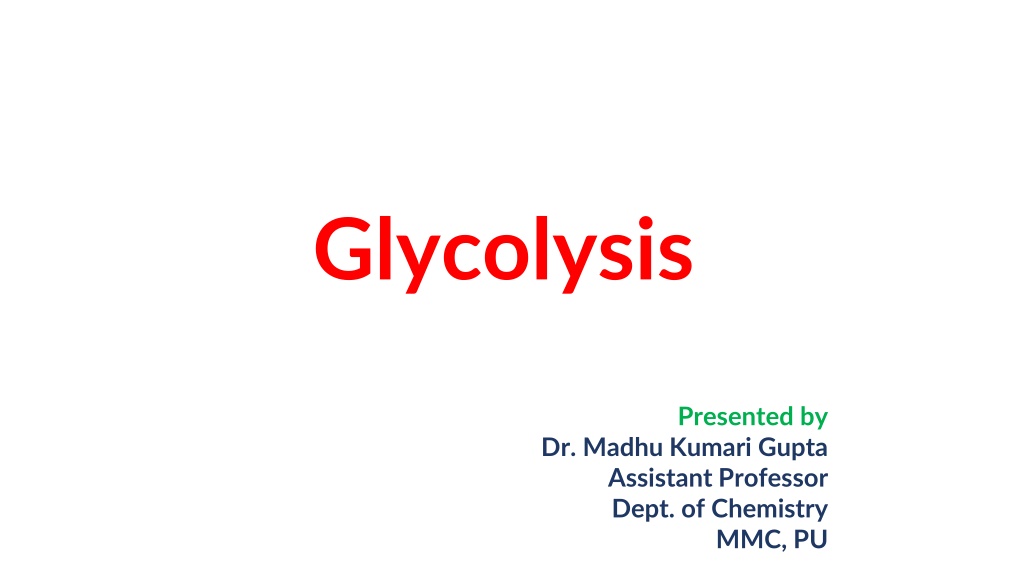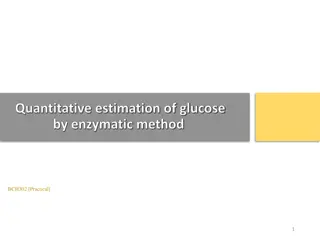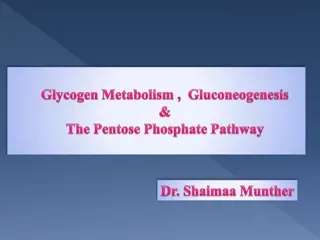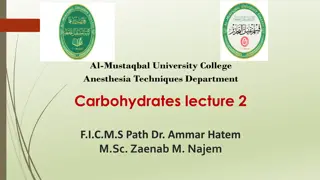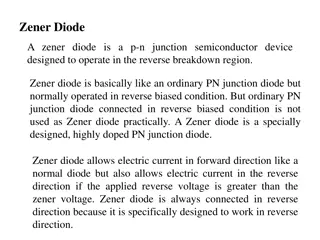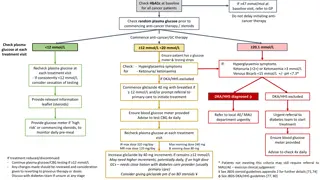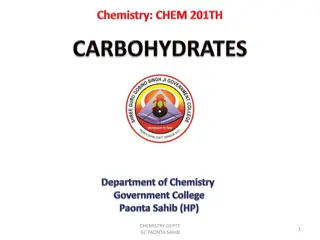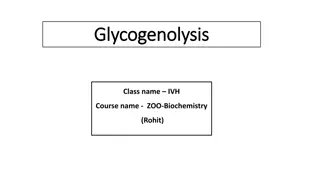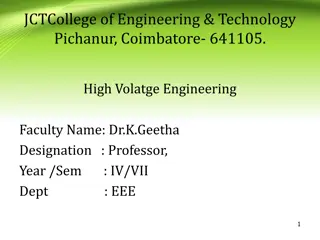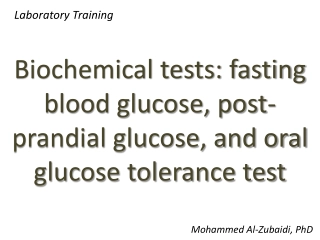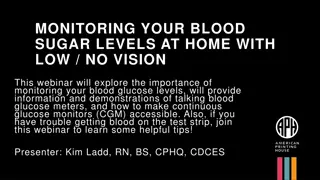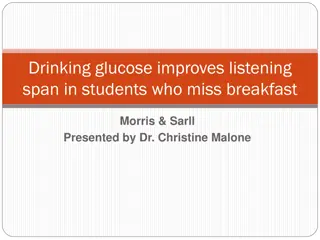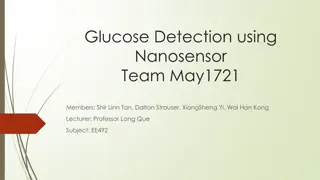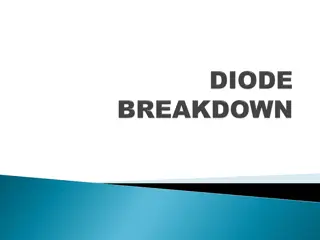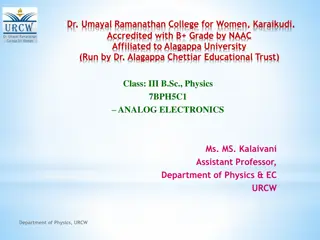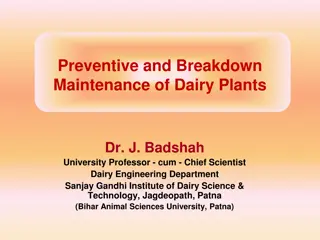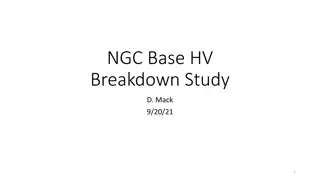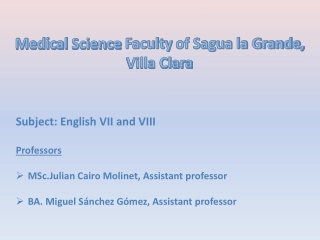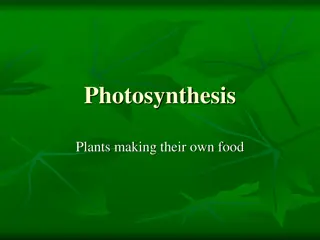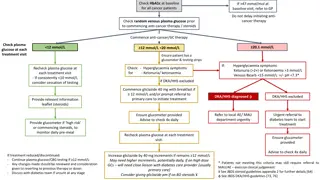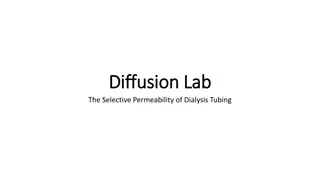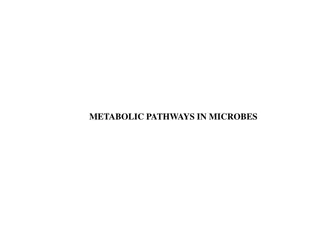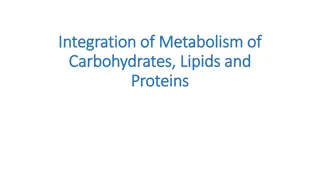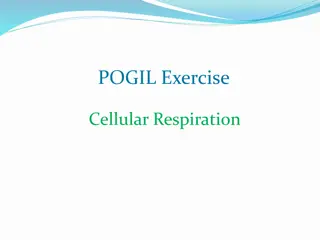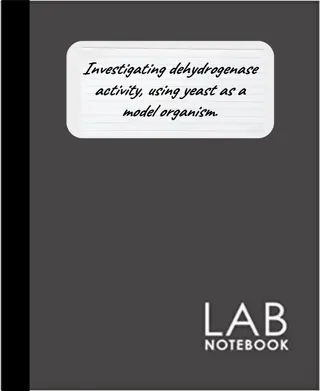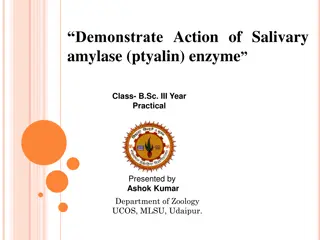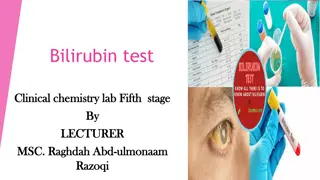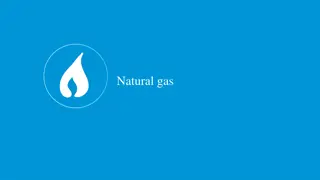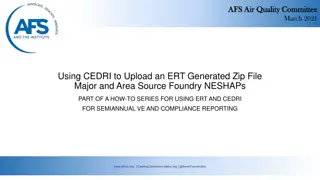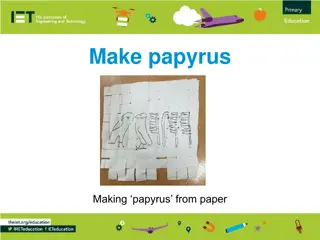Understanding Glycolysis: The Initial Step in Glucose Breakdown
Glycolysis, presented by Dr. Madhu Kumari Gupta, is a crucial process in cellular metabolism that involves the breakdown of glucose to extract energy. This pathway occurs in the cytosol and consists of three main phases - an energy-requiring phase, a splitting phase, and an energy-releasing phase. The overall outcome of glycolysis is the conversion of one glucose molecule into two pyruvate molecules, generating ATP and NADH in the process.
Download Presentation

Please find below an Image/Link to download the presentation.
The content on the website is provided AS IS for your information and personal use only. It may not be sold, licensed, or shared on other websites without obtaining consent from the author. Download presentation by click this link. If you encounter any issues during the download, it is possible that the publisher has removed the file from their server.
E N D
Presentation Transcript
Glycolysis Presented by Dr. Madhu Kumari Gupta Assistant Professor Dept. of Chemistry MMC, PU
Greek word- glycos meaning sweet/sugar and lysis meaning dissolution Glycolysis is the first step in the breakdown of glucose to extract energy for cellular metabolism. Glycolysis consists of an energy-requiring phase followed by an energy-releasing phase. Glycolysis is a series of reactions that extract energy from glucose by splitting it into two three-carbon molecules called pyruvates. Sequence of reactions converting glucose/ glycogen to pyruvate/lactate with production of ATP. Embden-Meyerhof pathway
In organisms that perform cellular respiration, glycolysis is the first stage of this process. However, glycolysis doesn t require oxygen, and many anaerobic organisms organisms that do not use oxygen also have this pathway. Glycolysis takes place in the cytosol of a cell, and it can be broken down into three main phases: energy-requiring phase, splitting phase energy-releasing phase, Reversal of glycolysis along with the alternate arrangement at the irreversible steps will result in the synthesis of glucose (Gluconeogenesis)
Energy-requiring phase- In this phase, the starting molecule of glucose gets rearranged, and two phosphate groups are attached to it. The phosphate groups make the modified sugar now called fructose-1,6-bisphosphate unstable, allowing it to split in half and form two phosphate-bearing three- carbon sugars. Because the phosphates used in these steps come from ATP, 2 ATP molecules get used up. Splitting phase- In this step, fructose 1,6-diphosphate get dissociated to get glyceraldehyde-3-phosphate and dihydroxyacetone phosphate Energy-releasing phase - In this phase, each three-carbon sugar is converted into another three-carbon molecule, pyruvate, through a series of reactions. In these reactions, two ATP molecules and one NADH molecule are made. Because this phase takes place twice, once for each of the two three-carbon sugars, it makes four ATP and two NADH overall.
Overall, glycolysis converts one six-carbon molecule of glucose into two three-carbon molecules of pyruvate. The net products of this process are two molecules of ATP and two molecules of NADH.
Step 1. A phosphate group is transferred from {ATP to glucose, making glucose-6-phosphate. Glucose-6-phosphate is more reactive than glucose, and the addition of the phosphate also traps glucose inside the cell since glucose with a phosphate can t readily cross the membrane. Step 2. Glucose-6-phosphate is converted into its isomer, fructose-6- phosphate. Step 3. A phosphate group is transferred from ATP to fructose-6-phosphate, producing fructose-1,6-bisphosphate. This step is catalyzed by the enzyme phosphofructokinase, which can be regulated to speed up or slow down the glycolysis pathway.
Step 4. Fructose-1,6-bisphosphate splits to form two three-carbon sugars: dihydroxyacetone phosphate DHAP and glyceraldehyde-3-phosphate. They are isomers of each other, but only one glyceraldehyde-3-phosphate can directly continue through the next steps of glycolysis. Step 5. DHAP is converted into glyceraldehyde-3-phosphate. The two molecules exist in equilibrium, but the equilibrium is pulled strongly downward, in the scheme of the diagram above, as glyceraldehyde-3- phosphate is used up. Thus, all of DHAP is eventually converted.
Step 6. Two half reactions occur simultaneously: 1) Glyceraldehyde-3-phosphate (one of the three-carbon sugars formed in the initial phase) is oxidized, and NAD+ is reduced to NADH and H+. The overall reaction is exergonic, releasing energy that is then used to phosphorylate the molecule, forming 1,3-bisphosphoglycerate. Step 7. 1,3-bisphosphoglycerate donates one of its phosphate groups to ADP, making a molecule of ATP start and turning into 3-phosphoglycerate in the process. Step 8. 3-phosphoglycerate is converted into its isomer, 2-phosphoglycerate. Step 9. 2-phosphoglycerate loses a molecule of water, becoming phospho- enolpyruvate PEP. PEP is an unstable molecule, poised to lose its phosphate group in the final step of glycolysis.
Step 10. PEP readily donates its phosphate group to ADP , making a second molecule of ATP. As it loses its phosphate, PEP is converted to pyruvate, the end product of glycolysis.
